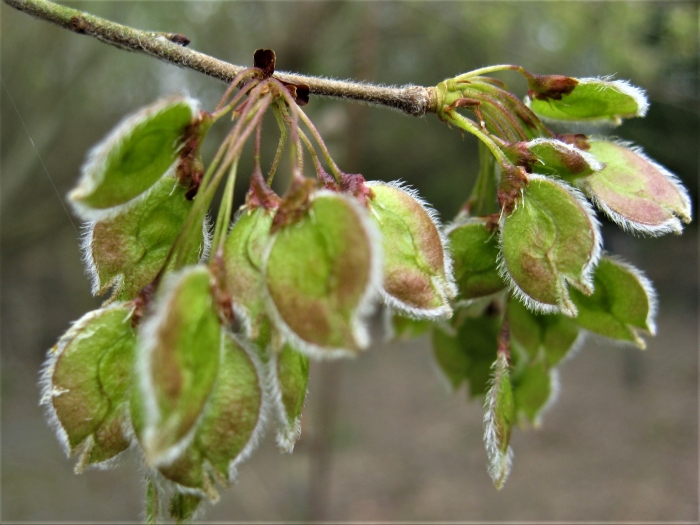European White Elm
(Ulmus laevis)
European White Elm (Ulmus laevis)
/
/

Stavast22
CC BY-SA 4.0
Image By:
Stavast22
Recorded By:
Copyright:
CC BY-SA 4.0
Copyright Notice:
Photo by: Stavast22 | License Type: CC BY-SA 4.0 | License URL: https://creativecommons.org/licenses/by-sa/4.0 | Uploader: Stavast22 | Publisher: Wikimedia Commons | Title: Ulmus_laevis_samarae_1.jpg | Notes: Mature Ulmus rubra in graveyard {{CopyrightedFreeUseProvidedThat|appropriate byline/photo/image credits are used. See [http://www.dnr.state.oh.us/privacy/#copyright the copyright notice]}} |























































Estimated Native Range
Summary
Ulmus laevis, commonly known as European White Elm or Flatter-Ulme, is a deciduous tree native to riparian zones, floodplains, and wetlands of Western Eurasia. It is often found along rivers and streams, which reflects its remarkable ability to withstand prolonged flooding. The European White Elm can reach heights greater than 30 meters with a broad, irregular crown and a trunk diameter of less than 2 meters. Its bark is gray and furrowed, and the tree is characterized by its extensive shallow root system that forms high buttresses around the base of the trunk.
The European White Elm is notable for its long flower stems, averaging 20 mm, and its cream-colored, apetalous, wind-pollinated flowers that appear in clusters of 15-30 before the leaves in early spring. The flowers are small, about 3–4 mm across, and are followed by samaras, or winged seeds. This species is valued for its adaptability to wet conditions and is often used in reforestation projects and for stabilizing riverbanks. It is also appreciated for its aesthetic qualities, particularly the loose, untidy branch structure that gives it a distinctive appearance in the landscape. In cultivation, it requires full sun to part shade, medium water, and soils with medium drainage. While it can be grown from seed, which germinates within a week even without heat, the viability of seeds can vary greatly. Softwood cuttings taken in June offer another propagation method, striking roots rapidly. Potential problems include susceptibility to Dutch elm disease, although Ulmus laevis is less affected than other elm species. It is also less prone to the elm leaf beetle.CC BY-SA 4.0
The European White Elm is notable for its long flower stems, averaging 20 mm, and its cream-colored, apetalous, wind-pollinated flowers that appear in clusters of 15-30 before the leaves in early spring. The flowers are small, about 3–4 mm across, and are followed by samaras, or winged seeds. This species is valued for its adaptability to wet conditions and is often used in reforestation projects and for stabilizing riverbanks. It is also appreciated for its aesthetic qualities, particularly the loose, untidy branch structure that gives it a distinctive appearance in the landscape. In cultivation, it requires full sun to part shade, medium water, and soils with medium drainage. While it can be grown from seed, which germinates within a week even without heat, the viability of seeds can vary greatly. Softwood cuttings taken in June offer another propagation method, striking roots rapidly. Potential problems include susceptibility to Dutch elm disease, although Ulmus laevis is less affected than other elm species. It is also less prone to the elm leaf beetle.CC BY-SA 4.0
Plant Description
- Plant Type: Tree
- Height: 60-100 feet
- Width: 30-50 feet
- Growth Rate: Moderate
- Flower Color: N/A
- Flowering Season: Spring
- Leaf Retention: Deciduous
Growth Requirements
- Sun: Full Sun, Part Shade
- Water: Medium
- Drainage: Medium
Common Uses
Bee Garden, Bird Garden, Butterfly Garden
Natural Habitat
Native to riparian zones, floodplains, and wetlands of Western Eurasia
Other Names
Common Names: Fluttering Elm , Spreading Elm , Stately Elm , Flatter-Ulme , Flatterulme , Orme Lisse , Orme Pédonculé , Fladderiep , Vitalm , Vresalm
Scientific Names: Ulmus laevis , Ulmus effusa , Ulmus pedunculata , Ulmus ciliata , Ulmus celtidea , Ulmus acuta , Ulmus rotundata , Ulmus communis var. ornata , Ulmus inflexa , Ulmus laevis var. parvifolia
GBIF Accepted Name: Ulmus laevis Pall.